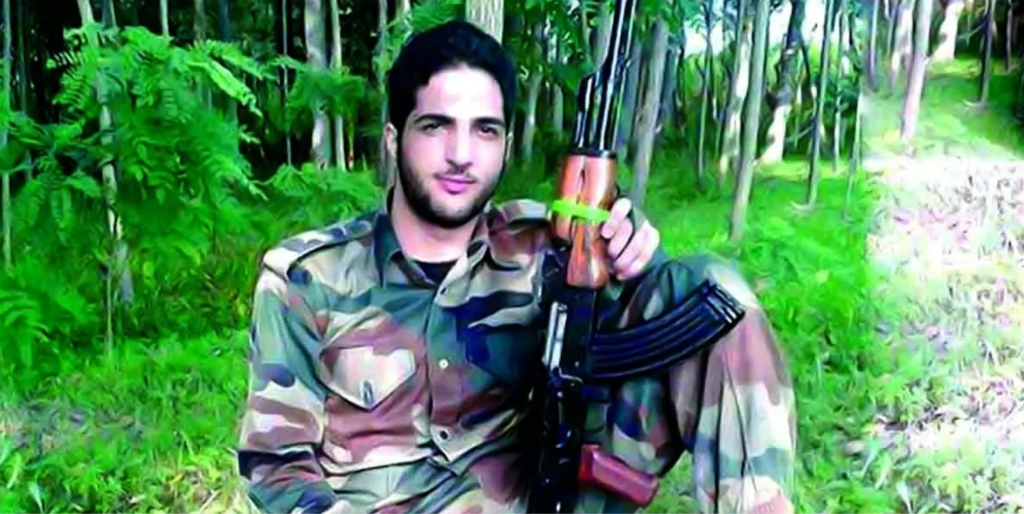
Resistance Dairies: Remembering Shaheed Burhan
Idrees Bhat
It was summer, and armed resistance—the most effective counter-occupational method—was on the decline in Kashmir. The sporadic incidents of resistance operations against occupation since 2008 had, however, kept the hopes of a revival afloat, and people were hoping against the hope. Or was it that a chunk of common people like me, who see things on a surface level, were more worried about the situation? Conflict has, in many ways, made Kashmiris more mature than their age over time, and a sizable section among them are actually aware of the nuances of our struggle and do not panic about its ebbs and flows.
I was in a far-flung area of Kulgam, discussing on and off with some friends about the methods of resistance and some possible situations that could unfold. “There are no experts in Kashmir, and one should not get carried away by the assumptions of a disappointed lot,” one of my friends often stated, adding, “the resistance will never vanish, and we will see the dawn of a free morning one day.” The trend of local newspapers carrying police statements about the declaration of different districts with “zero militancy” was gaining pace. Sometime before 2008, things were looking bleak, and no assurance from any friend with deep knowledge of things was helping.
I have always been a firm believer in armed resistance. Having read some books on the subject and assessing the situation around, especially since 2008, I was concerned about what could happen if the gun fell silent in Kashmir. Little did I know that years later, this question would be answered by a research scholar-turned-armed resistance commander from a remote area near the Line of Control!
Amid a sea of hopelessness, things suddenly started to change for people like me who were fast getting disillusioned by the turn of events over quite a few years. News of young resistance fighters roaming in the forests of southern Kashmir started circulating across the region. Names such as Abid Bhaijaan began to hit our ears more often. A few years later, a group photo of a dozen-odd fighters started making rounds on social media. The name of Burhan Wani had already become famous, and his pictures in military fatigues along with his associates were going viral. Resistance was back, and the apprehensions of India starting its dangerous projects without any disruption in the valley were diminishing for good.
The emergence of Burhan Wani marked a significant turning point in the history of armed resistance against Indian occupation. With his unapologetic defiance and the powerful symbolism of his public image, he tore off the masks that armed resistance fighters had previously worn to strategically conceal their identities. His beautiful pictures showing him proudly wielding automatic rifles alongside his associates became an embodiment of the Kashmiri people’s deep-rooted sentiment against the Indian state’s presence in the region. Indian media and military and political “analysts” to this date continue to deem it as a recruitment strategy initiated by Burhan Wani. However, it was absolutely not the military logic of recruitment that he posed in front of the camera. Besides some other important strategic gains, these images reclaimed the humanity of the Kashmiri fighters that Indian state machinery had, to some extent, managed to degrade through years of vile propaganda. Through the power of imagery, Wani revealed the individual behind the mask and reminded the world that behind the rifles were ordinary people, driven to extreme measures by their yearning for freedom and their collective struggle against the illegal military occupation of their homeland. The joyous images of Burhan Wani and other resistance fighters wielding automatic rifles spoke volumes about the deeply entrenched popular sentiment in Kashmir against Indian occupation. These visuals served as a poignant expression of the people’s frustration, resistance, and determination to resist a chronically violent and vindictive occupation. It is important to recognize that Wani’s images resonated not only with the armed fighters but with the wider Kashmiri populace, who saw in him a symbol of their shared aspirations and defiance against oppression.
The analysts of the post-Burhan Wani era often overlook or underestimate the political maturity of Kashmiri fighters and their comprehensive understanding of the complex Kashmir situation. They suggest that, had the Indian state treated them more favorably, these individuals could have pursued bureaucratic careers instead of resorting to armed resistance. Such assertions, however, fail to acknowledge the underlying reality that the Indian occupation, marked by persistent brutality and retaliatory tactics, effectively eradicates any possibility of a peaceful resolution or any viable compromise. Kashmiris are acutely aware that until the last soldier withdraws and their right to self-determination is respected, the Indian occupation will persist in its repressive and brutal form. They understand that countering this violence with violence becomes important, as it is the only means to reclaim their fundamental rights and restore dignity to a people who have endured decades of suffering. Burhan Wani’s legacy will forever be remembered as a courageous stand against the military occupation of his homeland. Besides the profound political significance of Burhan Wani’s armed resistance against the military occupation of Jammu and Kashmir, examining the legality of armed resistance in the region within the purview of international law reveals that the Kashmiri people’s struggle for self-determination is firmly grounded in legal principles. The right to bear arms, self-defense, and the protection of indigenous peoples’ rights all contribute to the legal standing of the Kashmiri armed resistance.
Editor's Pick
Recent Reviews
Socials Share
Facebook
Twitter
LinkedIn



